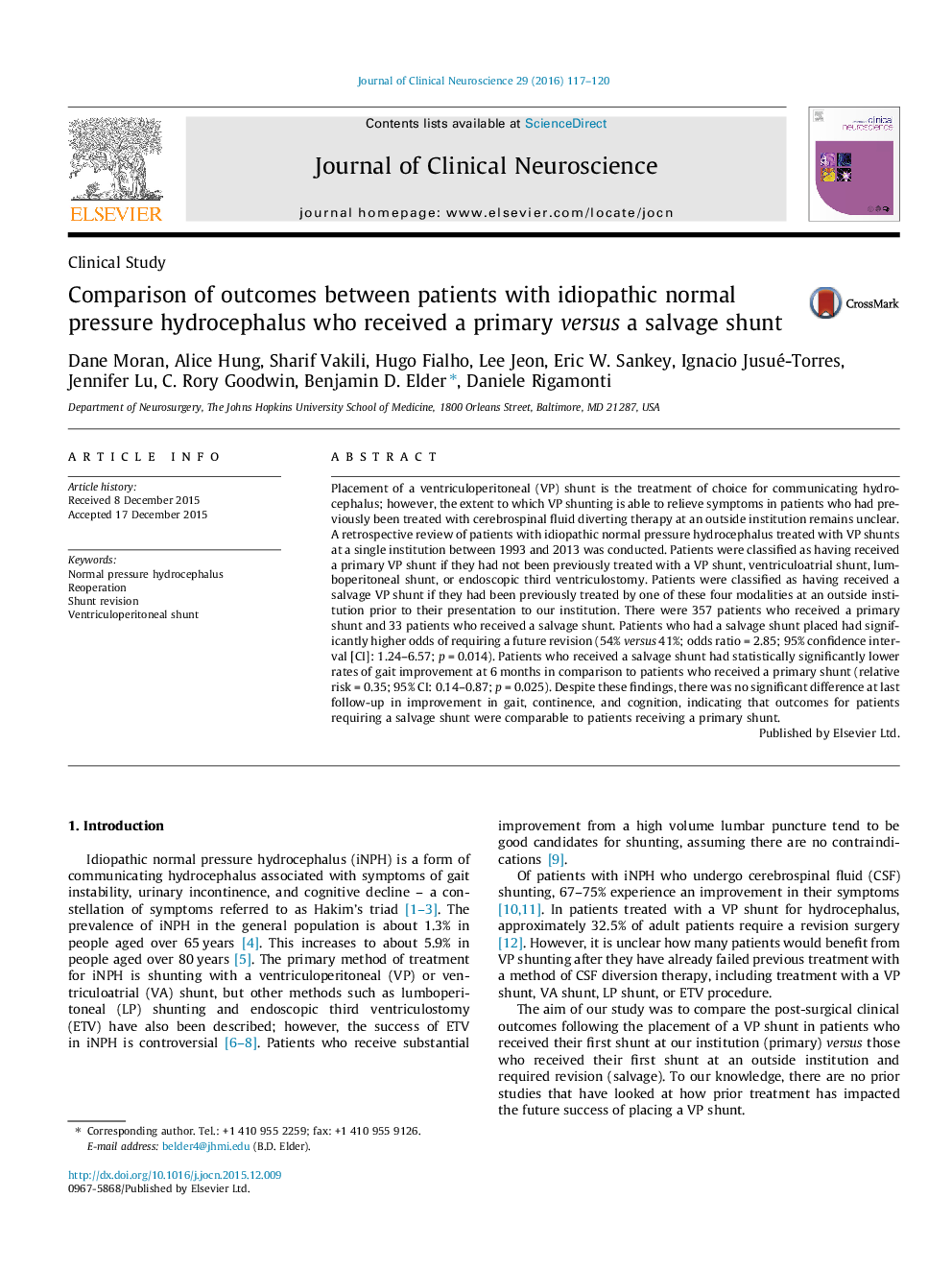| کد مقاله | کد نشریه | سال انتشار | مقاله انگلیسی | نسخه تمام متن |
|---|---|---|---|---|
| 3058421 | 1580287 | 2016 | 4 صفحه PDF | دانلود رایگان |
• Salvage shunts have comparable long-term rates of symptomatic relief to primary shunts.
• There is a higher rate of shunt infection and obstruction, following placement of a salvage shunt compared to a primary shunt.
• Patients who received a salvage shunt were more likely to require a revision, and were more likely to require a larger number of revisions.
Placement of a ventriculoperitoneal (VP) shunt is the treatment of choice for communicating hydrocephalus; however, the extent to which VP shunting is able to relieve symptoms in patients who had previously been treated with cerebrospinal fluid diverting therapy at an outside institution remains unclear. A retrospective review of patients with idiopathic normal pressure hydrocephalus treated with VP shunts at a single institution between 1993 and 2013 was conducted. Patients were classified as having received a primary VP shunt if they had not been previously treated with a VP shunt, ventriculoatrial shunt, lumboperitoneal shunt, or endoscopic third ventriculostomy. Patients were classified as having received a salvage VP shunt if they had been previously treated by one of these four modalities at an outside institution prior to their presentation to our institution. There were 357 patients who received a primary shunt and 33 patients who received a salvage shunt. Patients who had a salvage shunt placed had significantly higher odds of requiring a future revision (54% versus 41%; odds ratio = 2.85; 95% confidence interval [CI]: 1.24–6.57; p = 0.014). Patients who received a salvage shunt had statistically significantly lower rates of gait improvement at 6 months in comparison to patients who received a primary shunt (relative risk = 0.35; 95% CI: 0.14–0.87; p = 0.025). Despite these findings, there was no significant difference at last follow-up in improvement in gait, continence, and cognition, indicating that outcomes for patients requiring a salvage shunt were comparable to patients receiving a primary shunt.
Journal: Journal of Clinical Neuroscience - Volume 29, July 2016, Pages 117–120
